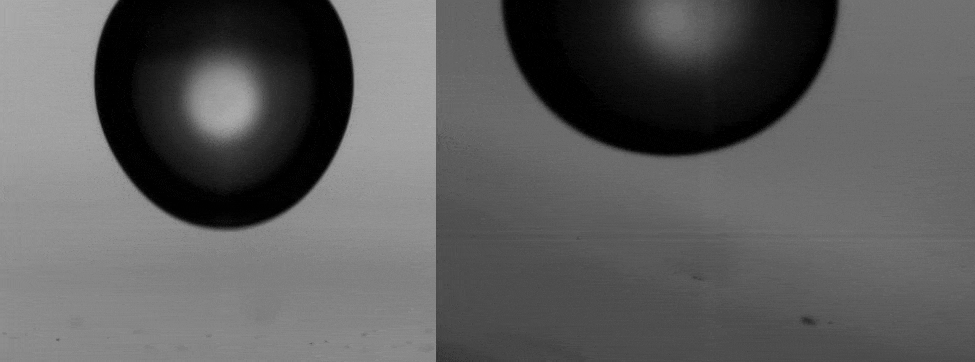Sessile drop coalescence, where two or more liquid drops merge on a surface to form a final drop, is a dynamic event that exhibits complex shape evolution. As the combining drops evolve into a single body of fluid, the dynamics cause the liquid to traverse both a projected and wetted area on the surface. Depending on the interplay of solid, liquid, and gas phases, the amount of area ‘swept’ can vary drastically. Understanding how the solid-liquid-gas system affects the extent of these swept areas is important both fundamentally and from an applications perspective. For example, self-cleaning surfaces leverage sweeping by sessile drop coalescence to collect contaminants and other foreign debris for removal. Anti-frost surfaces rely on coalescence to eject drops before freezing can occur, with multiple drops merging via sweeping during the removal process. Finally, in dropwise condensation heat transfer processes, a principal mechanism of fresh surface generation for renucleation is the sweeping up of nearby drops by a coalescence event. These swept regions have significant implications on heat transfer as smaller, renucleated drops have a higher heat flux versus larger, more insulating drops.

Figure 1: Top and bottom views of binary sessile drop coalescence on a non-wetting surface with time progressing from left to right. The black silhouettes depict the projected (Aproj) and wetted (Awet) swept surface areas arising from the coalescence dynamics with Aproj > Awet.
Droplet impact onto solids can have dynamically rich results such as deposition, splashing, receding breakup, partial rebound, complete rebound and bubble entrapment, with its study relevant to many industries such as agricultural crop spraying, inkjet printing, spray painting, internal combustion engines and printed circuit boards. In this work we utilize high speed photography and computer aided image processing to study droplets impacting a variety of surfaces with different properties and geometric configurations. We find that each impacting event excites a unique collection of mode shapes distinguished by their frequency and amplitude, which leads us to the question, can you hear the geometry of impact? Our goal is to bridge the gap between current vibrated sessile drop theory and the impacting event, in order to answer this question and make other practical predictions about the impacting event itself.
Figure 2: (below) A droplet of water impacting a fluorosilane surface at 0 degrees and 17 degrees.
